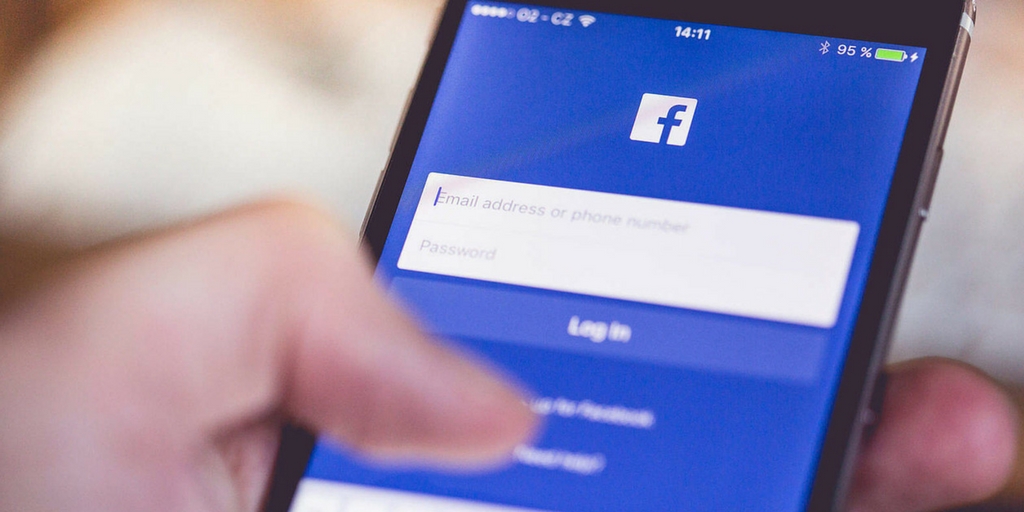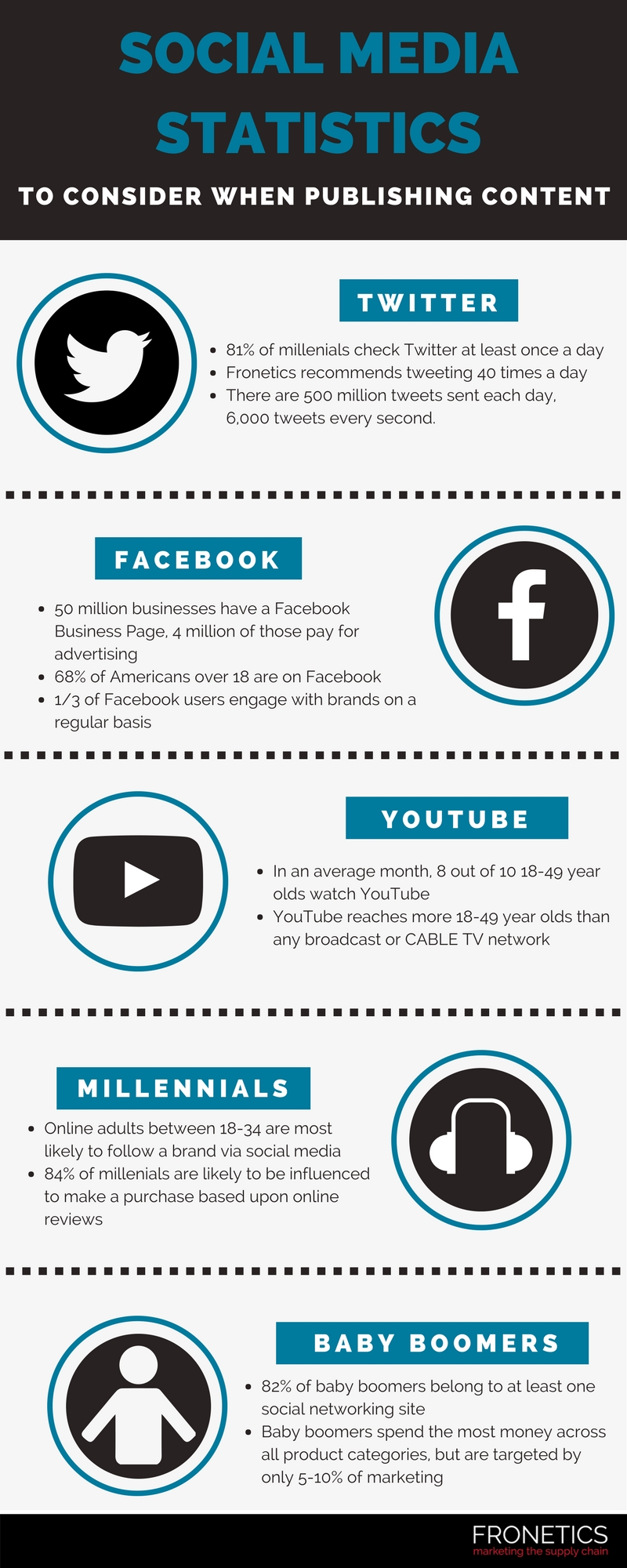
by Fronetics | May 31, 2018 | Blog, Content Marketing, Current Events, Marketing, Social Media
Also in social media news May 2018: Pinterest gives businesses more control over how users view their content, Snapchat offers skip-free ads, and Facebook is re-opening application reviews and chatbot development.
At the beginning of May, Facebook hosted its annual developer conference, Facebook F8. This year’s keynote speaker, CEO Mark Zuckerberg, focused on rallying developers to continue building for his platform, despite the recent controversies.
Facebook also used its annual conference to kick off some new initiatives, including:
- Clear History: a new privacy feature allowing users to delete data Facebook has collected from sites and apps that use its ads and analytics tool. This will allow users to scrub some of their browsing history from Facebook’s data store.
- Instagram’s new video chat: Instagram’s messaging has lacked video chat capabilities, until now. The new feature was created to win over users who currently prefer Snapchat for video chat.
- Translation abilities on Messenger: Facebook is slowly integrating translation abilities for Messenger, starting with English to Spanish translation, with hopes to expand to other languages in the future.
[bctt tweet=”Clearly WhatsApp is doing something right, announcing their stories feature, WhatsApp Status, officially reached 450 million daily active users. ” username=”Fronetics”]
But Facebook isn’t the only social media giant looking to gain new traction with users. WhatsApp, Snapchat, and even Pinterest have been making changes to increase user engagement. And clearly WhatsApp is doing something right, announcing their stories feature, WhatsApp Status, officially reached 450 million daily active users. This is a tough reality for Snapchat, who previously dominated the video stories space, but now only has a fraction of the daily users as WhatsApp.
Here’s your social media news for May 2018.
Marketers prepare for European Union’s GDPR laws
The European Union’s General Data Protection Regulation (GDPR) is a new set of laws that provide “greater protection for consumers’ privacy and set strict guidelines on how personal information is collected, stored, and used.” These radical new laws will dramatically affect the way user data is collected and stored by businesses in Europe, including U.S. companies that do business abroad. The laws officially go into effect on May 25, 2018, nearly two years after they were initially passed by the Parliament. Fronetics is staying on top of these changes and will provide updates on any changes that occur.
Facebook clarifies advertising processes and data practices
At Facebook’s F8 conference, the platform explained the basics of how Facebook advertising works and answered tough questions about its advertising practices. Vice President of Ads, Rob Goldman, writes “We do not tell advertisers who you are or sell your information to anyone. That has always been true. We think relevant advertising and privacy aren’t in conflict, and we’re committed to doing both well.” He also highlighted how users can control, manage, and even delete their data from the site to opt out of ads.
Snapchat tests 6-second unskippable ads
On May 15, Snapchat started running six-second unskippable ads on select Snapchat shows. Once reluctant to run ads on their app, Snapchat is opening up to the idea after a tough year since becoming publicly traded. The new ad format called, yes, Commericals is hoping to boost advertising revenue and increase business opportunities.
Pinterest rolls out new business profile and insights
Pinterest just announced its new business profile that allows brands to “highlight the content that they want customers to see first such as their latest pins, specific boards, or most recent Pinterest activity on their site.” The new feature also allows brands to create statistics reports, including the total number of people who saw or shared your pins in the past month. These new changes are expected to go live in the next couple of months.
Facebook reopens app review process
In light of the Cambridge Analytical scandal, Facebook had stopped all application review and chatbot development efforts to focus on its privacy and data policies. But they have officially reopened the app review process “after making some changes to make it more comprehensive and grounded on ensuring that each of [its] APIs creates value for people, is transparent, and builds trust.” The improvements to Facebook’s platform policies and programs hope to encourage continued use of its products, including chatbots.
Instagram experiments with improved explore section
Not far off from Facebook’s tried, and failed, Explore Feed, Instagram is now testing a redesigned Explore tab for users to discover new content and organize that content into relevant topic channels. The new tool “is still personalized for you, but the content is now organized into topic channels, so you can browse across your interests and go deeper on any area you’d like.” The Explore tab will be available in the next few weeks.
Instagram adds improved tools for businesses to connect with customers
Instagram is adding the ability for businesses to receive new messages from customers. Originally these messages were filed into a pending folder and now they’ll be available directly in a business’ inbox. The app is also added improved call-to-action buttons, “which allow users to complete transactions through popular third-party partners without having to leave Instagram.” Additional features include the ability for businesses to star and filter customer messages.
Related posts:


by Fronetics | Mar 27, 2018 | Blog, Content Marketing, Current Events, Marketing, Social Media
Also in social media news March 2018: Snapchat allows branded content ads; Facebook is testing Messenger Broadcasts; and Twitter tests prioritizing news tweets.
With the increasing popularity of automation tools and chatbot technology, social media platforms are working to regulate how brands are reaching their target audiences. Trying to ensure that users aren’t being inundated with spam posts or fake news, Twitter, Facebook and many others are coming out with stricter rules and regulations. This could mean extra work for smaller brands trying to keep up with the latest changes to make sure their content is getting as much reach as possible.
But there are real benefits to using automation tools, especially when it comes to social media management. Facebook, for example, is testing a new Messenger Broadcast that would help smaller businesses, which don’t already utilize chatbots, blast messages to users that have started a conversation with their Pages. These small but helpful updates will allow companies to have a greater reach without extra work for their marketers.
Here’s your social media news for March 2018.
Facebook/Cambridge Analytica scandal furthers distrust
Facebook issued yet another apology to its users after news broke that a quiz app developed by a Cambridge University researcher leaked personal data from about 50 million people in 2014. Political consulting firm Cambridge Analytica, which was affiliated with President Donald Trump’s 2016 election campaign, allegedly used the data to create psychological profiles to influence voters. Users responded with a #deleteFacebook campaign, in which those angered by Facebook’s mishandling of the data are encouraging widespread removal of all Facebook-associated apps, including Instagram and WhatsApp. Fronetics is staying on top of this situation and will continue to provide social media recommendations in light of such reports.
Facebook ends Explore Feed
Adam Mosseri, head of Facebook News Feed, announced plans to discontinue the Explore Feed on the website in early March. Facebook introduced Explore Feed in October as, essentially, a second News Feed that acted as a dedicated place for Pages. User feedback showed that “Explore isn’t an effective way for people to discover new content on Facebook,” and actually made it harder for users in test areas to access important information.
Twitter cracks down on automation and bot usage
Twitter released a new set of rules and regulations that prohibits developers from using Twitter automation and bot programs to simultaneously post identical content from multiple accounts. It also bans users from performing actions — such as likes, retweets, or scheduling tweets — from multiple accounts. “One of the most common spam violations we see is the use of multiple accounts and the Twitter developer platform to attempt to artificially amplify or inflate the prominence of certain Tweets,” writes Yoel Roth on Twitter’s blog.
YouTube adds new live-streaming tools and features
YouTube introduced a new chat replay feature that unfolds exactly as it did when the video was streaming live. Users can now watch videos that originally aired live and follow the conversations that took place alongside of the video, even after the live stream is over. This new feature supports YouTube’s mission to add “ways to watch live videos and interact with your community in real time.”
Facebook tests messenger broadcasts
Facebook is testing a new messaging tool directed at small businesses that haven’t jumped on the chatbot bandwagon. TechCrunch reports that Messenger Broadcasts allow companies to blast a message to anyone who has already started a conversation with them in Messenger. The new tool is currently being tested among a small percentage of Pages in the U.S., Mexico, and Thailand. Facebook hopes to turn the messaging tool into a paid product for small businesses and limit the number of messages that can be broadcast to cut down on spam.
Twitter test makes news the first thing users see in the timeline
Twitter recently confirmed a test of a news reel that would put news highlights at the top of users’ feeds. According to BuzzFeed, Twitter will select news items to appear in boxes at the top of the timeline. Twitter says the test is designed to “highlight the platform’s bent towards current happenings” while making news easier to find. This test comes in the aftermath of Facebook also trying to prioritize news events over Pages, while also fighting increasing fake news.
Snapchat allows branded content ads
Snapchat will now allow publishers to share branded content among the articles and videos they post. “Starting now Discover publishers are allowed to distribute branded content within the Snap Ads that run in their Publisher Stories,” a Snapchat spokesman said in an emailed statement. Snapchat Discover generated more than $100 million in ad revenue for its media partners in 2017, and this latest update will hope to boost even more ad sales.
Related posts:


by Fronetics | Feb 27, 2018 | Blog, Content Marketing, Current Events, Marketing, Social Media
Also in social media news February 2018: Facebook is developing more sophisticated chatbots, Twitter’s increased character count leads to more tweets, and Instagram introduces a new content publishing beta for businesses.
The Olympics aren’t the only thing to keep an eye on this month. The results from the fourth quarter of 2017 show that social media sites are going for the gold when it comes to customer engagement.
Updates to the most popular sites have included longer character counts, more advanced conversational skills with chatbots, and new tools for easier sharing. All of these changes are working to improve user experience and help keep users active on the biggest sites.
Here’s your social media news for February 2018.
Instagram launches content publishing beta for businesses
Instagram’s latest update allows businesses to schedule photo posts, view posts they’ve been tagged in, and view other business profiles. Prior to this update, users would have to use a third-party tool to publish posts to the site. “This change helps businesses manage their organic presence more effectively,” writes Instagram on its business blog. This new feature is also open to Facebook Marketing Partners.
Facebook boosts local news posts
In a continued effort to increase customer engagement, Mark Zuckerberg shared the latest changes to Facebook’s News Feed. The site will now boost local events and news stories from high-quality sources. “We’re making a series of updates to show more high-quality, trusted news. Last week we made an update to show more news from sources that are broadly trusted across our community. Today our next update is to promote news from local sources,” writes Zuckerberg. The updates to News Feed are rolling out in the U.S., with plans to expand to other countries later this year.
Twitter launches Sponsored Moments
Twitter introduced a new sponsorship opportunity, Sponsored Moments, in which advertisers can run tweets designed around a specific event or theme. Similar to other in-stream sponsorships, advertisers can promote the moment to their specific target audience and expand their reach beyond the content partner’s existing followers. Twitter is hoping these changes will help advertisers be relevant “in the moment” and create opportunities for a more organic marketing reach.
Facebook developing new chatbots with better conversational skills
The Verge reports that Facebook is working on more sophisticated chatbots with a “consistent personality” and the ability to carry on better conversations. Feedback from Facebook’s FAIR lab showed that customers were unhappy with chatbots’ ability to provide context-based responses and their programmed responses, like “I don’t know,” when faced with questions they can’t answer. Facebook’s new research is looking for patterns in large datasets that will allow chatbots to converse in a more natural human dialogue.
Snapchat hits 187 million daily active users
Snap’s Q4 2017 Earnings Report showed that Snapchat gained 8.9 million daily active users during the last quarter, bringing its total to 187 million daily active users. While still not reaching Instagram and Facebook’s user numbers, this growth shows the largest increase in users since 2016. This increase included 3 million new users from outside of the U.S., a market Snapchat has just recently focused on expanding into.
Twitter’s increased tweet character count leads to more tweets
Back in November, Twitter increased its tweet size to 280 characters. Though most tweets aren’t using the additional characters, the platform has seen an increase in tweets. CEO Jack Dorsey stated that the recent expansion hasn’t actually changed the length of messages people are sending out — but it has led to more engagement.” The increased engagement has come from more retweets and mentions, higher follower rates, and less abandonment of tweets.
Facebook updates branded content policies
Facebook will no longer allow publishers to take money for posting media they didn’t create or weren’t involved in creating. These updates to the platform’s branded content policies also prohibits publishers from placing ads in video, audio or visual content and states that all branded content may only be posted using the branded content tool and has to feature the proper disclosures.
Related posts:


by Fronetics | Feb 8, 2018 | Blog, Content Marketing, Logistics, Marketing, Social Media, Strategy, Supply Chain
These social media statistics are important to keep in mind when planning out your content marketing strategy.
A strong social media presence is key to successful marketing in 2018. Social media is simply unavoidable these days.
So, you jumped on board and you’re posting and tweeting. You’re creating content. You’re learning about search engine optimization and how to improve your rankings. But you’re still not reaching the audiences you were hoping to attract. What’s going wrong?
When you are posting on social media could be as important as what you’re posting.
Timing is everything, and that statement especially holds true when it comes to posting content to social media. If you are sending out your message and nobody is there to see it, you are that proverbial tree falling in the forest; you did not make a sound. Your post had little to no impact.
So, even if you are putting in the time and effort to craft informative blog posts, tweets with just the right message, or Facebook posts that inspire more than just page likes, you still are not getting the most exposure you can out of social media.
We have done our homework when it comes to the best times to post on social media. And the truth is there is no “one size fits all” answer to when you should post. There are general guidelines that differ for each site. But in general, it’s important to keep your target audience in mind when deciding where and when to post.
Here are some social media statistics that you need to consider when deciding when to post your content.
Social media statistics your business needs to consider when publishing content

(Made with Canva)
Related posts:

SaveSave
SaveSave

by Fronetics | Jan 31, 2018 | Blog, Content Marketing, Current Events, Marketing, Social Media
Also in social media news January 2018: SnapChat is considering 3-second unskippable ads; Twitter will now display a video count on all video tweets; and Facebook is rolling out custom audiences for users that linger on ads.
The new year has brought lots of new changes, especially to the Facebook community. I’m sure by now you have heard about the updates to Facebook’s News Feed that are having major impacts on business page’s organic reach. But the changes don’t stop there. Twitter, Snapchat and Instagram are trying to follow Facebook’s lead and enhance their user experience. Through updates that include video counts, enhanced data collection, and recommended posts, social media is working overtime to make sure it’s active users are staying active.
Here’s your social media news for January 2018.
Facebook’s News Feed tweak penalizes pages soliciting likes and shares.
Facebook continues to make changes to News Feed — including limiting the amount of content users will see from Pages. See our full update here. Facebook also is tightening the reigns on Pages and individuals that use engagement bait to attract new followers. The site will now penalize posts that ask people to like, share, comment on, or otherwise engage with the post to boost engagement. Posts “that systematically and repeatedly use engagement bait to artificially gain reach in News Feed … will now be shown less,” the company announced in early January.
Twitter rolls out account activity API for powering customer service and chatbots
Twitter introduced a new API that will offer developers access to real-time activities, like tweets, mentions and replies, to help update their customer service tools and chatbots. The latest version of Twitter’s data collecting software is designed for those who need data for a large number of accounts, multiple URLs, or managed support.
Instagram allows users to send live video in direct messages
Instagram announced that users can now send live videos through direct messaging. By tapping on the Direct icon, users can send live video to a friend or group to encourage them to view the content. “Today’s change makes it easy to invite people to watch your live videos and send exciting live videos you’re viewing to your friends in real time,” says the announcement.
SnapChat contemplating 3-second unskippable ads
AdAge reports that Snap Inc. is giving “serious consideration” to adding 3 seconds of commercial breaks before offering a skip option on ads on SnapChat. This new ad format was created to attract more ad dollars from brands. “Advertisers are not spending as much as they have previously with SnapChat,” says the top advertiser from a brand that works closely with the messaging service. “They have to do something that draws more interest from advertisers, and they are getting more aggressive to address the market’s needs.” If implemented, the postponed skip option would be similar to YouTube’s ad experience.
Facebook testing custom audiences for users lingering on ads
Matt Navarra, director of social media for @TheNextWeb, reported a new option for targeting a list of people who have “spent more time than usual viewing your display ads on Facebook and Instagram.” The new custom audience option, called Dwell, is an expanded version of Dwell Time, which targeted people who spent any time viewing an ad. In theory, this new custom-audience option will give advertisers the ability to re-target users who viewed your ads but didn’t take any action.
Twitter displays video count on all video tweets
Twitter is adding a video count to all organic and video ads. In compliance with the Media Rating Council’s video viewability standard, Twitter will count a view once the video has been played for at least 2 seconds and with at least 50% of the video in view. This new update is a minor change to support the company’s mission to make the platform more attractive to users. “View counts are a subtle way to encourage people to share more video to the service if they feel their content is being widely seen,” writes Garrett Sloane for Adage.
Instagram rolls out recommended pages
Instagram has officially started recommending posts to users based on posts that have been liked by other accounts the user follows. The new feature is being compared to Facebook’s Explore Feed, where users can view content from a wider network, not just people and pages they follow directly. But don’t worry, the update isn’t meant to replace a user’s preferred content. The section will appear after a user has viewed all the posts in their feed, an Instagram spokesperson explains, while confirming the feature’s public launch to TechCrunch.
Related posts:








